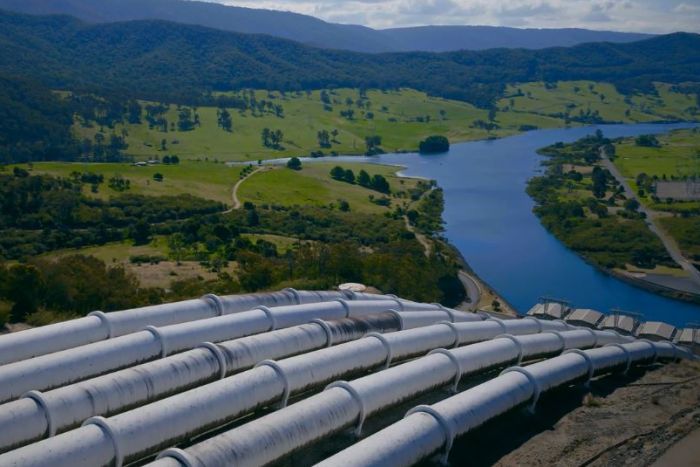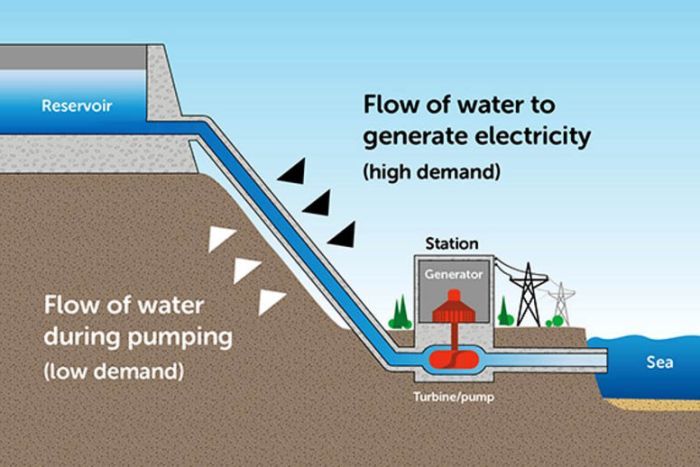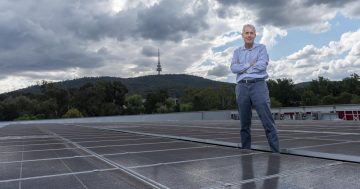
Professor Andrew Blakers believes the Snowy 2 pumped hydro scheme could be the first of many. Photo: Snowy Hydro.
One of Australia’s leading renewable energy experts says the Monaro region’s pumped hydro potential could help to establish base-load power for a wholly renewable energy system within the next decade.
Professor Andrew Blakers, director of the ANU’s Centre for Sustainable Energy Systems, believes that in addition to Snowy Hydro 2, there are “plenty of other opportunities” for pumped hydro in the region, including Brown Mountain, Cathcart and Araluen.
As politicians argue over how the transition to renewables will affect our power supply, Professor Blakers says that pumped hydro can provide reliable, continuous backup power that alleviates concerns about the reliability of solar and wind energy. He was speaking at a recent renewable energy forum in Queanbeyan, organised by Repower Monaro and Climate Action Monaro, and also attended by the former Federal Liberal leader and economist Dr John Hewson.
Unreliability is often used as a reason for continuing to run coal-fired power stations, but Professor Blakers is confident that pumped hydro schemes will drive coal out of business by the 2020s, and that the Monaro could be at the forefront of the new industry. Professor Blakers said that he and his team at the ANU have identified 22,000 sites in Australia where pumped-hydro could be effective, though in practice only a few of these will be needed.
1800 of them are south of Canberra, and Professor Blakers says that the combination of wind and relatively good sunshine means the Monaro is “blessed” with excellent renewable energy potential. “Only the best 0.1 per cent of the sites are needed, so we can be very choosy in site selection,” he said.
A pumped hydro site requires a minimum head of 300 metres and a slope between reservoirs and dams, but Professor Blakers said that the vast majority of sites are closed loops not situated on river systems. National parks and urban areas would also be excluded.

How pumped hydro storage works (most systems are closed loops, and would not necessarily be oceanside). Image: Energy Australia.
Professor Blakers believes that the future of energy production lies in photovoltaic cells combined with sophisticated storage systems, provided by pumped hydro. He says it’s a misunderstanding of the technology to think that the renewables transition demands a like-for-like replacement for coal-powered electricity. Pumped hydro would primarily operate at times when solar and wind availability is low because of weather conditions. It’s also very quick: power can be dispatched to the grid in less than a minute.
The existing Snowy Scheme, particularly Tumut 3, already makes use of pumped-hydro technology. If Australia proceeds using existing technology and know-how, Professor Blakers says we would easily reach the emissions targets set by the Paris Accords. “Solar photovoltaic and wind are being installed at a combined rate of five Gigawatts per year which is fast enough to reach 50 per cent renewable electricity by 2024. We could reach 100 per cent renewable electricity in 2032 at zero net cost.”
Professor Blakers said that his calculations about a completely renewably-powered future had not been made using “heroic assumptions”. Instead, he focused on technologies already in mass production with a deployment capacity of greater than 100 GW.
He was emphatic in his support for Snowy 2.0, saying that any conservation issues will be far outweighed by the benefits, adding that he believes both Araluen and Brown Mountain would have few environmental impacts.
The final decision on Snowy 2.0 is due this month, and Professor Blakers said that the Federal government’s energy policy decisions are critical. And in the end, he said, “Politics determines whether we stay on track”.













